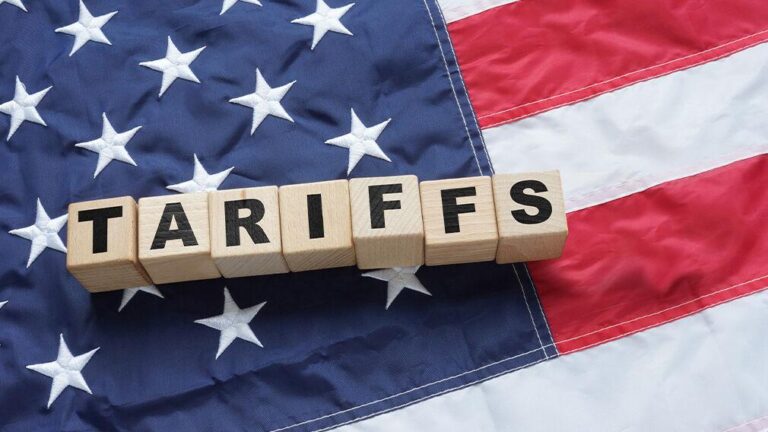The United States has officially enacted additional tariffs, marking a significant development in ongoing trade tensions. Announced earlier this year, the new duties target a range of imported goods, aiming to protect domestic industries and address trade imbalances. This move has drawn varied reactions from global markets and industry stakeholders, signaling potential shifts in international trade dynamics. Awaz The Voice brings you the latest updates on what these tariffs mean for consumers, businesses, and the broader economy.
Impact of New USA Tariffs on Global Trade and Domestic Markets
The implementation of the latest USA tariffs has sent ripples across global supply chains, sparking immediate responses from major trading partners. Economists warn that these additional duties, aimed at protecting domestic industries, could inadvertently disrupt established trade routes and provoke retaliatory measures. Countries heavily exporting to the US, including China, the European Union, and Mexico, may prioritize alternative markets, potentially reshaping global trade flows in the coming months.
On the home front, American consumers and manufacturers face increased costs as tariffs drive up the prices of imported goods and raw materials. Key sectors affected include electronics, automotive, and agriculture, where raw material sourcing relies extensively on foreign suppliers. The following table highlights estimated tariff impacts on select industries according to recent government data:
| Industry | Average Tariff Rate Increase | Projected Cost Impact |
|---|---|---|
| Electronics | 15% | + $2.6 Billion annually |
| Automotive | 10% | + $1.8 Billion annually |
| Agriculture | 12% | + $900 Million annually |
- Exporters face tighter margins due to increased tariffs abroad.
- Importers are compelled to negotiate supply chain adjustments or absorb higher costs.
- Consumers may encounter higher retail prices and reduced product variety.
Analyzing Sector-Specific Consequences and Economic Forecasts
Manufacturing and agriculture sectors are poised to face immediate pressure from the newly imposed tariffs, with increased costs on imported raw materials and intermediate goods. Industries reliant on global supply chains, such as automotive and electronics manufacturing, could experience shrinkage in profit margins as companies scramble to adjust pricing or seek alternative suppliers. The agriculture sector, particularly soybean and corn farmers who export substantial quantities to affected countries, may endure retaliatory tariffs, further complicating market access and destabilizing income forecasts for rural communities.
- Manufacturing: Rising input costs, supply chain disruption
- Agriculture: Export barriers, reduced commodity prices
- Retail & Consumer Goods: Potential price hikes, consumer spending shifts
Economists warn that these tariffs may trigger a deceleration in certain regional economies, with ripple effects extending to employment rates and investment plans. One forecast model from the Economic Policy Institute suggests a modest GDP contraction of 0.3% over the next year if trade tensions persist. Meanwhile, inflationary pressures could mount as import costs rise, forcing the Federal Reserve to reconsider its monetary stance. Consumer confidence indexes are likely to reflect growing uncertainty, potentially dampening discretionary spending and slowing economic momentum.
| Sector | Short-Term Impact | Forecast (Next 12 months) |
|---|---|---|
| Manufacturing | Cost increases, supply delays | 1.2% Output decline |
| Agriculture | Export reduction, price volatility | 5% Revenue drop |
| Retail | Higher shelf prices | 0.8% Sales slowdown |
Strategic Recommendations for Businesses Navigating Increased Tariff Challenges
In the face of escalating tariff pressures, businesses must adopt agile strategies to safeguard profit margins and maintain market competitiveness. Diversifying supply chains has become paramount; companies are increasingly exploring alternative sourcing options outside the United States to mitigate cost hikes. Additionally, investing in automation and efficiency improvements can help offset increased import expenses by reducing overall operational costs. Businesses should also leverage advanced data analytics to forecast tariff impacts more accurately and adjust pricing strategies in real-time, minimizing financial shocks.
Collaboration with industry associations and active engagement with policymakers is another critical avenue to influence future trade regulations. Staying informed about tariff revisions and potential exemptions enables proactive adjustment rather than reactive scrambling. Below is a snapshot of effective practices adopted by industry leaders as a response to the latest tariffs:
| Strategy | Key Benefit | Example Industry |
|---|---|---|
| Nearshoring | Reduced shipping times & costs | Automotive |
| Tariff Classification Optimization | Lower duties through proper coding | Apparel |
| Product Redesign | Minimized tariff impact via material changes | Electronics |
| Inventory Stockpiling | Hedge against future tariff increases | Retail |
Closing Remarks
As the newly imposed additional tariffs officially take effect, businesses and consumers across the United States brace for the potential economic ripple effects. Analysts will be closely monitoring trade flows, market responses, and diplomatic developments in the coming weeks. For continued coverage on how these measures evolve and impact both domestic and international markets, stay tuned to Awaz The Voice.




